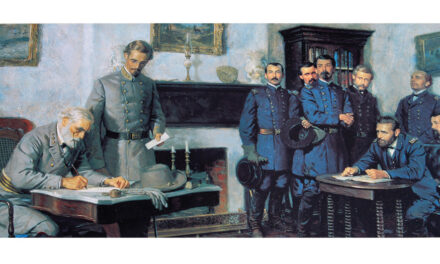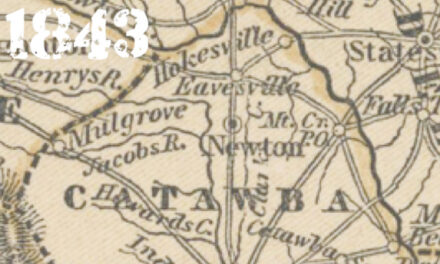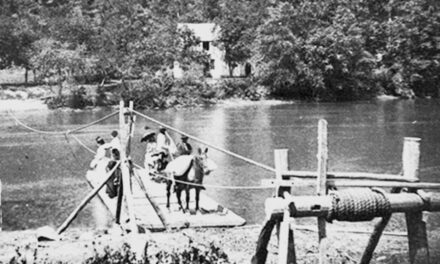
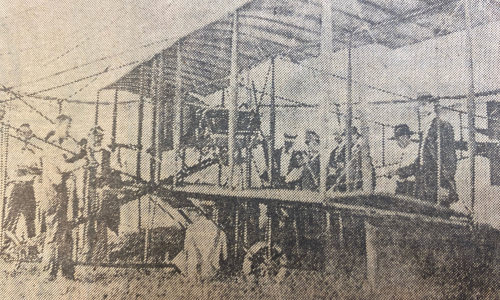
The first plane to fly in Hickory. Assembly was required (Image courtesy of HDR)
The “aeroplane” came in a box (that’s what they called it in those days). Dutifully, the aircraft was uncrated, put together, tested and sent into aloft for spectators to see at the Catawba County Fair. It proved to be quite an attraction. In the pre-World War I days when almost no one had ever seen a heavier-than-air machine take to the skies, people were agog that such a thing was possible. It was the first flight to occur in Hickory.
A mere decade had passed since the Wright Brothers had proven that man could defy gravity in such a way and fairgoers wanted to witness the phenomenon with their own eyes, a spectacle that they would talk about for the rest of their lives.
Takeoff did not need much space but landing did. The entire plane was tied down, then the engine started and ramped up to such thrust that when the ropes were cut, the “Curtiss pusher-type biplane” bolted into the air. It made several passes over Hickory and Brookford at an altitude of 200 feet before returning to earth. That’s when the real achievement occurred. With no flat, open space to land the plane, the pilot used a ball field near the fairgrounds located in the vicinity of Green Park School (current home to Hickory Public School offices) to bring the feat to a safe conclusion.
Once the show was over, the same crew disassembled the aeroplane, packed it away in the same crate, put it on a boxcar and sent it to the next town for a similar demonstration. The stunt ignited an enthusiasm for flight that lasts to this day in Hickory. Pasture land became early airfields, one on Catawba Springs Road, others in Brookford and Longview. A plane landed on one of them in 1920 with a water cooled Hispano-Suiza engine that required 14-year-old Hickory native Alan Jones to fetch buckets of water from a nearby creek to cool.
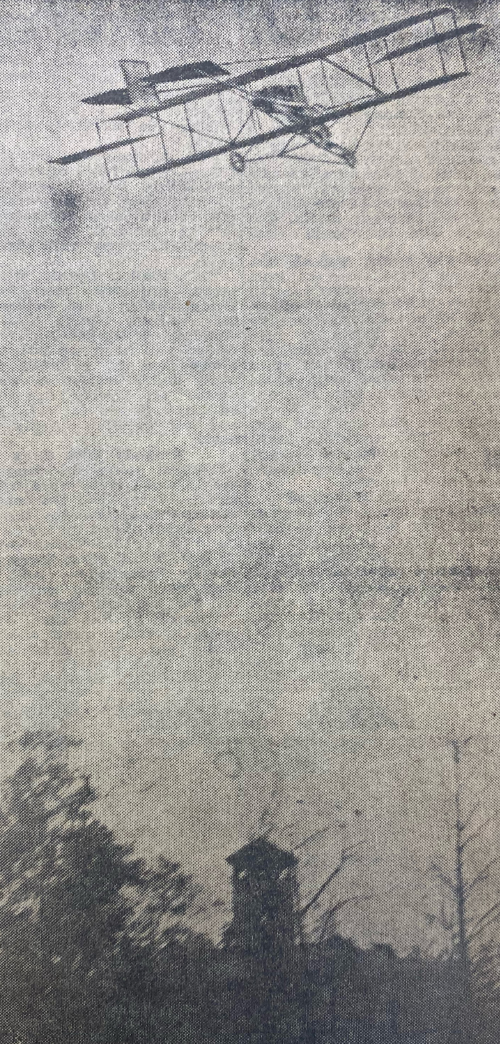
One photographer captured the first flight over Hickory, staged as it sailed 200 feet overhead during the Catawba County Fair (Image courtesy of HDR)
Jones found himself so fascinated with the barnstormers that came through that he became a professional parachutist making his first jump over Hickory from 3,000 feet above ground. From his hometown he launched a career, performing the same act in cities and towns all across the country.
Hickory’s first recorded crash came when R.E. Ballenger pulled back when he should have pushed up on the controls (different from the British planes he was used to flying). The plane lost power and Ballenger hit the ground with his American plane but luckily suffered only a broken wrist.
For spectators on the ground, perhaps the most incredible event came on January 17, 1931. That was the day when Reid Seaboch and Martha Garrison got married. Instead of a church, the two took to the air to exchange vows as passengers aboard a stunt plane. They brought with them a minister to perform the ceremony as well as a witness for the certificate that required such signatures. The witness happened to be a reporter for the Hickory Daily Record who filed an article. To cap off the unusual event, the pilot put the plane into a loop after the “I dos” to symbolize the “nuptual knot” of the now married couple.
Those were wild days for air flight before Hickory got a proper place to land. Next week, the creation of the Hickory Regional Airport.



